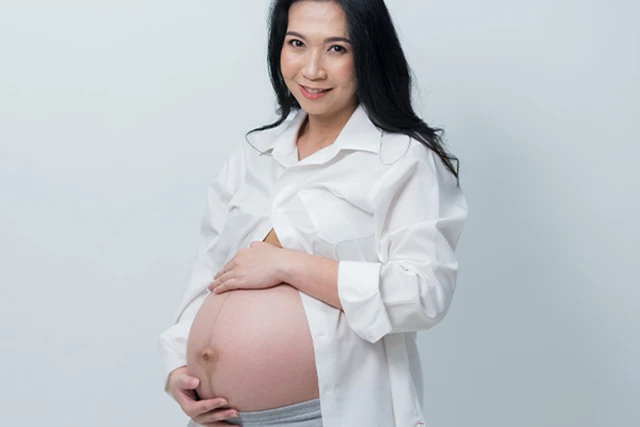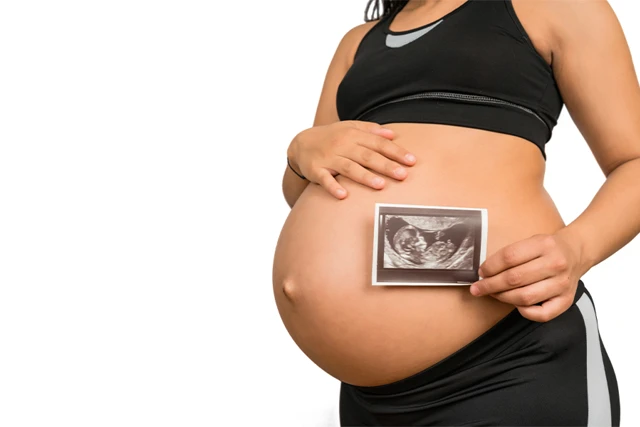
The Safe Period During Pregnancy
1. What Is the Safe Period During Pregnancy?
The safe period during pregnancy is commonly understood as the time when the risk of miscarriage, preterm birth, and other complications is minimized. Typically, this phase begins after the first trimester and continues through the second trimester. At this time, the baby is more stable, and many early pregnancy risks have decreased.
1.1. First Trimester (0–12 Weeks)
The first trimester is often considered the most critical stage, as the fetus undergoes rapid development. During this time, the risk of miscarriage is highest, and pregnant women are advised to be especially cautious. Although the first trimester is not a part of the “safe period,” careful care is essential to ensure the health of both mother and baby.
1.2. Second Trimester (13–26 Weeks)
The second trimester is commonly referred to as the safe period of pregnancy. By this time, the fetus has developed significantly, and the risk of miscarriage is notably reduced. Many women feel more comfortable during this time, with fewer symptoms such as nausea and fatigue. The fetus is growing steadily, and the mother’s body usually adapts well to the physical changes of pregnancy.
1.3. Third Trimester (27–40 Weeks)
While the third trimester is crucial for fetal development and preparation for birth, it is not considered part of the safe period. The risks of preterm birth and other complications increase as pregnancy progresses. However, with proper care and regular checkups, most women can go through this time safely and prepare for a healthy birth.
The Safe Period During Pregnancy
2. Why Is the Second Trimester Considered the Safe Period?
The second trimester is often called the “honeymoon phase” of pregnancy because it is typically the most comfortable and stable time for the mother. Several factors contribute to this:
- Lower Risk of Miscarriage: By the second trimester, the risk of miscarriage drops significantly, giving expectant mothers more confidence in their pregnancy journey.
- Fetal Development: During this time, the baby is rapidly growing, and many essential organs and systems are forming. The baby begins to move, and mothers often start to feel these movements, which is a reassuring sign of good health.
- Maternal Health: Many early pregnancy discomforts, such as morning sickness, tend to ease during the second trimester. Pregnant women often feel more energetic and healthier in this stage.
- Placental Function: The placenta, which provides nutrients and oxygen to the baby, becomes fully functional during the second trimester. This reduces the risks associated with placental insufficiency, which can lead to complications.
3. Activities and Considerations During the Safe Period of Pregnancy
Even though the second trimester is considered the safe period, pregnant women still need to take care of themselves and their developing baby. Below are some important activities and considerations to keep in mind:
- Prenatal Care: Regular prenatal checkups are essential during the second trimester. These appointments help doctors monitor the health of both mother and baby, ensuring that any potential issues are addressed in a timely manner.
- Nutrition: A balanced diet in essential nutrients is crucial during pregnancy. Pregnant women should focus on consuming foods that provide vital vitamins and minerals, such as folic acid, iron, calcium, and omega-3 fatty acids. These nutrients support the baby’s healthy development and help maintain the mother’s health.
- Exercise: Doing exercise during the second trimester can offer many benefits, including reducing stress, improving circulation, and helping manage weight gain. However, it’s important to choose safe and moderate activities, such as walking, swimming, or prenatal yoga, and avoid exercises that may be harmful.
- Hydration: Drinking enough water is essential for both mother and baby. Pregnant women should stay well-hydrated throughout the day to support increased blood volume and the necessary level of amniotic fluid during pregnancy.
- Rest and Relaxation: As the body undergoes significant changes during pregnancy, adequate rest is vital. Expectant mothers should listen to their bodies, get enough sleep, and make time to relax to support their own well-being and that of their baby.
- Mental Health: The second trimester is also a great time to focus on mental health. Engaging in relaxation techniques such as meditation or deep breathing can help reduce stress and maintain a positive mood.

The Safe Period During Pregnancy
4. Potential Risks During the Safe Period
While the second trimester is often considered the safest phase of pregnancy, challenges can still arise. Some potential risks include:
- Gestational Diabetes: This condition can develop during the second trimester and is characterized by high blood sugar levels. It’s important to undergo routine glucose screening and follow any dietary or treatment recommendations provided by the doctor.
- Preeclampsia: Preeclampsia is a condition marked by high blood pressure and can occur during the second trimester. Regular prenatal checkup is crucial to monitor blood pressure and detect early signs of this condition.
- Preterm Birth: Although less common in the second trimester, preterm birth can still happen. Pregnant women should be aware of signs such as frequent contractions, lower back pain, and vaginal bleeding, and seek medical attention if they experience any of these symptoms.

The Safe Period During Pregnancy
5. Tips for a Safe and Healthy Second Trimester
To ensure a safe and healthy pregnancy during the second trimester, consider the following tips:
- Attend All Prenatal Checkup: Regular checkups are essential for monitoring the health of both mother and baby. Be sure to attend all scheduled appointments and follow your doctor’s advice.
- Maintain a Healthy Diet: Focus on a diet rich in fruits, vegetables, whole grains, lean protein, and healthy fats. Avoid processed foods, excessive sugar, and unhealthy fats.
- Stay Active: Engage in safe physical activities to support overall health and well-being. Exercise can also relieve common pregnancy discomforts such as back pain and swelling.
- Stay Hydrated: Drink enough water throughout the day to meet the increased needs of your body during pregnancy.
- Listen to Your Body: Pay attention to how you feel and take breaks when needed. Pregnancy is a time of major changes, and it’s important to care for yourself.
- Educate Yourself: Learn about the different stages of pregnancy and what to expect during the safe period. Understanding what’s happening with your body and your baby can help ease anxiety and boost your confidence.

The Safe Period During Pregnancy
Conclusion
The safe period of pregnancy, which usually occurs during the second trimester, offers pregnant women a relatively comfortable and stable phase. During this time, pregnancy-related risks are minimized, and both mother and baby can thrive with proper care. By following the guidance outlined in this article, based on information from Wilimedia, expectant mothers can make informed choices to ensure a healthy and successful pregnancy.
As with any time of pregnancy, it is essential to stay in regular contact with your doctors, stay informed, and take proactive steps to support both your physical and mental health. With the right approach, the safe period of pregnancy can be a time of joy, growth, and preparation for the arrival of new life.
Website: https://wilimedia.co
Fanpage: https://www.facebook.com/wilimediaen
Email: support@wilimedia.co
